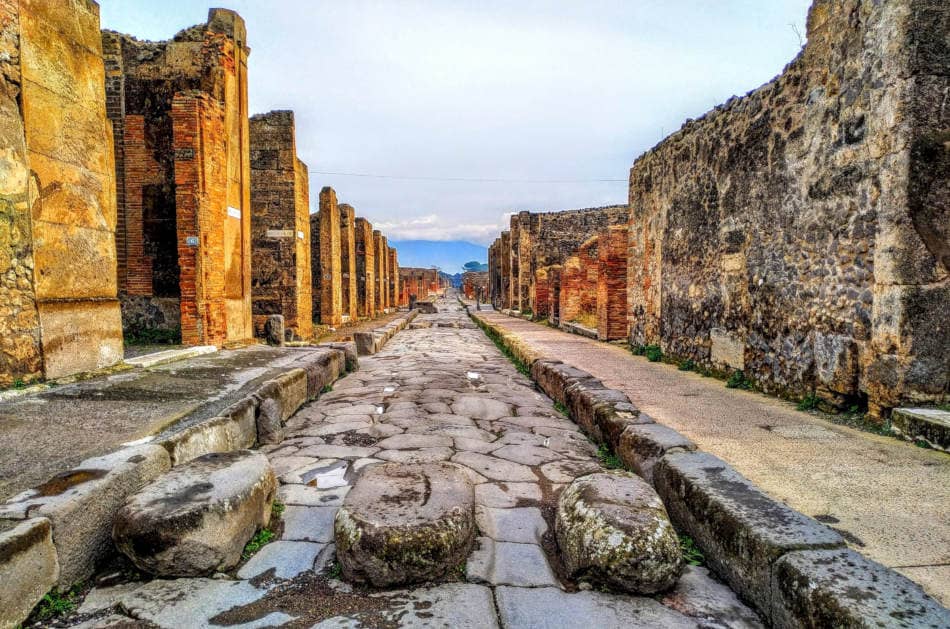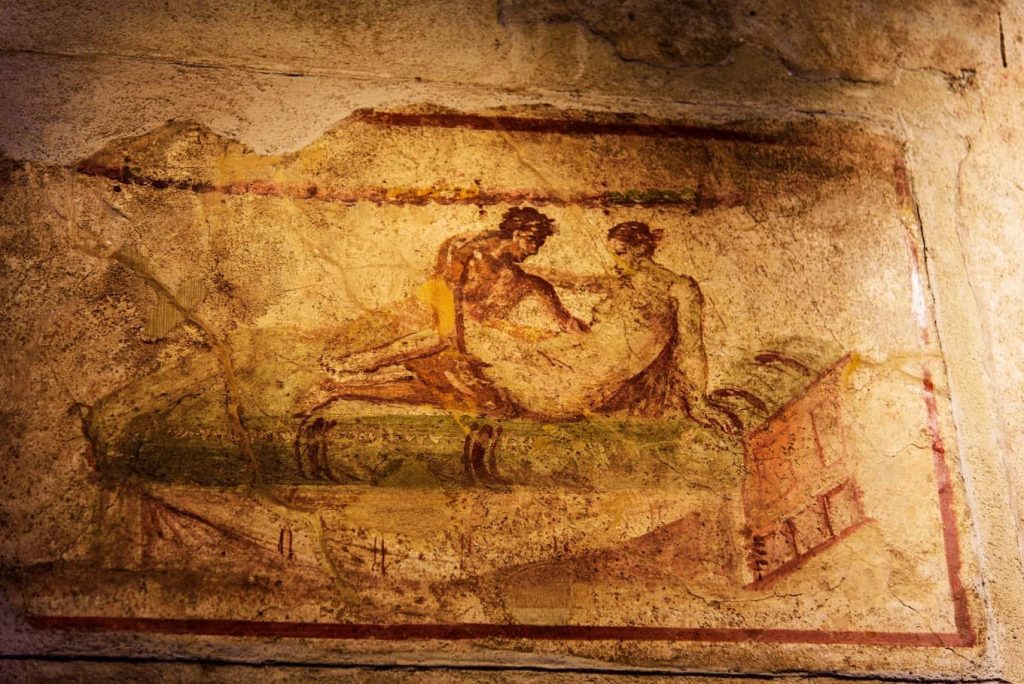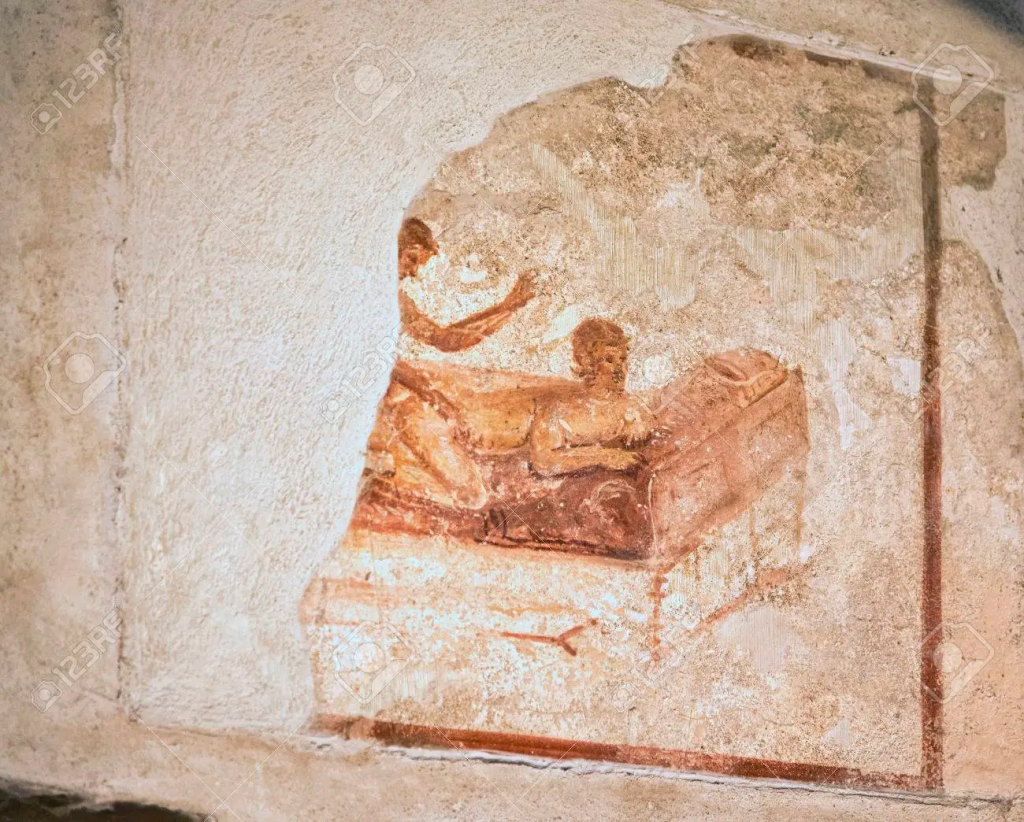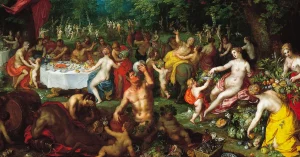I recently visited Pompeii with my girlfriend and 10-year-old daughter, and I was struck by the incredible preservation of this ancient Roman city. Pompeii was a thriving and prosperous city until the eruption of Mount Vesuvius in 79 CE, which buried the city and its inhabitants under a layer of ash and pumice. Despite the passing of nearly two thousand years, the city remains largely intact, and visitors can still walk its streets, admire its houses, and marvel at its rich cultural heritage.

The Haunting Beauty of Pompeii’s Streets
As we stepped onto the streets of Pompeii, we were immediately struck by the haunting beauty of this ancient city. The rain had stopped, and the sun was shining, casting a warm glow over the ruins. Despite the passing of nearly two thousand years, the city remains largely unchanged, and we were able to walk the same streets that were walked by ancient Romans all those years ago. The well-preserved buildings, adorned with frescos and mosaics, offered a glimpse into the daily life of the Pompeiians and the sophisticated culture they lived in.

The Lupanar: A Window into Ancient Roman Life
One of the highlights of our visit was the Lupanar, a brothel located in the heart of Pompeii. The Lupanar is significant not only for its explicit frescos, which depict various sexual acts, but also for what it tells us about the daily life of ancient Romans. Prostitution was a common and accepted part of Roman society, and brothels such as the Lupanar served as gathering places for both pleasure and business. The paintings, although explicit, offer a rare glimpse into the attitudes towards sexuality in ancient Rome and highlight the differences between our own cultural attitudes and those of the past.
The Lupanar was a small building, but its walls were adorned with stunning frescos, depicting various sexual acts. We were amazed by the level of detail in the paintings, which depicted everything from sexual positions to various acts of pleasure and domination. The frescos were not only an eye-opening experience, but they also offered a glimpse into the attitudes of the Pompeiians towards sexuality and the role it played in their daily lives.
Exploring Sexual Attitudes of the Past
The city was frozen in time, preserving the daily lives of its residents, including their beliefs and practices regarding sexuality.
One such example of this is the Lupanar. The brothel contained several frescoes that depicted sexual acts, indicating the open and candid attitude towards sexuality in ancient Rome.

Another example of the sexual attitudes of the past in Pompeii can be seen in the art and decor of the city’s homes. Many of the homes contained erotic art, such as paintings, sculptures, and murals, that were not hidden from view but were displayed openly in the private spaces of the domus. This open display of sexuality in the homes of Pompeii indicates a comfortable and relaxed attitude towards sex and sexuality.
While the ancient Romans were more permissive towards sexuality, they also had strict moral codes and laws regulating sexual behavior. Adultery was a serious crime, and sexual acts outside of marriage were considered scandalous. However, despite these regulations, the sexual attitudes of ancient Rome were generally liberal compared to many other societies of the time.
Pompeii provides a fascinating glimpse into the sexual attitudes of the past. Through the preservation of its brothels, homes, and art, we can see that ancient Rome had a more relaxed and open approach to sexuality than many societies of the time. These findings offer a unique perspective on the evolution of sexual attitudes and the role of sexuality in society throughout history.
Preserving the Past for the Future

Pompeii is a testament to the power of preservation and the importance of maintaining our cultural heritage. The city provides us with a unique opportunity to step back in time and learn about the daily life of ancient Romans. Despite the passage of nearly two thousand years, the city remains largely unchanged, and visitors can still walk its streets, admire its houses, and marvel at its rich cultural heritage. It is our responsibility to preserve this remarkable artifact of the past for future generations to enjoy and learn from.
The House of the Tragic Poet: A Masterpiece of Pompeiian Art

Another highlight of our visit was the House of the Tragic Poet, one of the most impressive and well-preserved houses in Pompeii. The house was named after the mosaic that adorned the entrance, depicting a tragic poet holding a scroll and surrounded by musical instruments. The house was a true masterpiece of Pompeiian art, with its well-preserved frescos, intricate mosaics, and beautiful marble flooring.
The walls of the house were adorned with stunning frescos, depicting scenes from Greek mythology, including the myth of Dionysus, the god of wine and ecstasy. The frescos were not only beautiful but also offered a glimpse into the beliefs and values of the Pompeiians. The intricate mosaics that adorned the floor depicted scenes from nature, such as birds
A Memorable Experience- The Pompeii
In conclusion, my visit to Pompeii was a truly unforgettable experience, and I would highly recommend it to anyone interested in history, culture, and the power of the past. The well-preserved remains of this ancient Roman city offer a window into the daily life of its inhabitants and provide us with a unique opportunity to touch the past and immerse ourselves in history.




